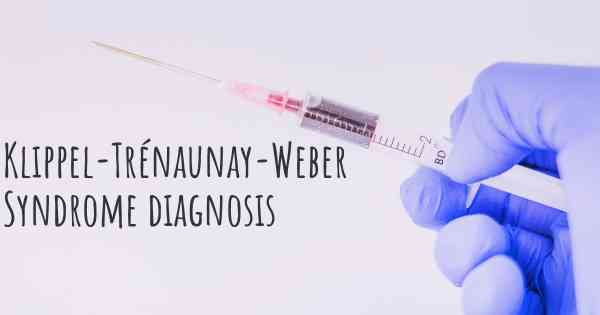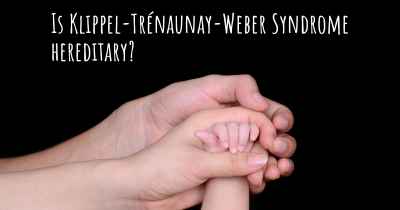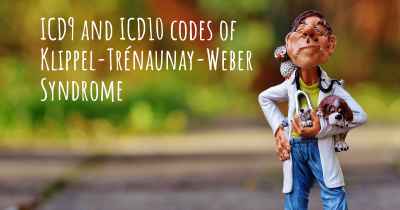How is Klippel-Trénaunay-Weber Syndrome diagnosed?
See how Klippel-Trénaunay-Weber Syndrome is diagnosed. Which specialists are essential to meet, what tests are needed and other useful information for the diagnosis of Klippel-Trénaunay-Weber Syndrome

Klippel-Trénaunay-Weber Syndrome (KTWS) is a rare congenital disorder characterized by a triad of symptoms including port-wine stain birthmarks, varicose veins, and soft tissue and bone overgrowth. The diagnosis of KTWS can be challenging due to its variable presentation and overlapping features with other conditions. However, a combination of clinical evaluation, imaging studies, and genetic testing can aid in establishing an accurate diagnosis.
Clinical Evaluation
The initial step in diagnosing KTWS involves a thorough clinical evaluation by a healthcare professional experienced in vascular anomalies. The presence of the three hallmark features of KTWS is assessed:
- Port-wine stain birthmarks: These are flat, pink to dark red patches on the skin that are typically present at birth. They are caused by abnormal blood vessels near the surface of the skin.
- Varicose veins: These are enlarged, twisted veins that may appear bluish or purplish. They commonly affect the legs but can occur in other areas as well.
- Soft tissue and bone overgrowth: This feature manifests as an abnormal growth of soft tissues and bones, leading to asymmetry and limb length discrepancies.
Additionally, the healthcare provider will assess for other associated symptoms such as lymphatic abnormalities, muscle weakness, and joint problems.
Imaging Studies
Imaging studies play a crucial role in the diagnosis of KTWS by providing detailed visualization of the affected areas. The following imaging modalities are commonly used:
- Ultrasound: This non-invasive imaging technique uses sound waves to create real-time images of the blood vessels and soft tissues. It helps in evaluating the extent of vascular abnormalities, identifying deep venous malformations, and assessing blood flow.
- Magnetic Resonance Imaging (MRI): MRI utilizes powerful magnets and radio waves to generate detailed images of the body's structures. It is particularly useful in assessing soft tissue and bone abnormalities, identifying muscle hypertrophy, and evaluating the involvement of deeper structures.
- Computed Tomography (CT) Scan: CT scans use X-rays and computer processing to create cross-sectional images of the body. They can provide valuable information about bone abnormalities, vascular malformations, and the extent of tissue involvement.
These imaging studies help in confirming the presence of vascular anomalies, assessing the severity of soft tissue and bone overgrowth, and ruling out other conditions that may mimic KTWS.
Genetic Testing
While the exact cause of KTWS is not fully understood, recent research suggests that genetic mutations may play a role in its development. Genetic testing can be performed to identify specific gene mutations associated with KTWS, although it is not always necessary for diagnosis.
There are several genes that have been implicated in KTWS, including the PIK3CA gene. Genetic testing can help confirm the diagnosis in individuals with atypical or overlapping features, as well as provide valuable information for genetic counseling and family planning.
Additional Diagnostic Considerations
It is important to note that the diagnosis of KTWS is primarily clinical, based on the presence of characteristic signs and symptoms. In some cases, additional tests may be recommended to rule out other conditions that can present with similar features, such as Sturge-Weber syndrome or Parkes Weber syndrome.
Conclusion
In summary, the diagnosis of Klippel-Trénaunay-Weber Syndrome involves a comprehensive approach that combines clinical evaluation, imaging studies, and genetic testing. The presence of port-wine stain birthmarks, varicose veins, and soft tissue and bone overgrowth are key clinical features. Imaging modalities like ultrasound, MRI, and CT scans help visualize the extent of vascular anomalies and tissue involvement. Genetic testing can provide additional confirmation and identify specific gene mutations associated with KTWS. A multidisciplinary team of healthcare professionals, including dermatologists, vascular specialists, and geneticists, is often involved in the diagnostic process to ensure accurate diagnosis and appropriate management of this complex condition.
Posted May 30, 2017 by Fernanda 1100
Posted Sep 22, 2017 by Miguel 400








